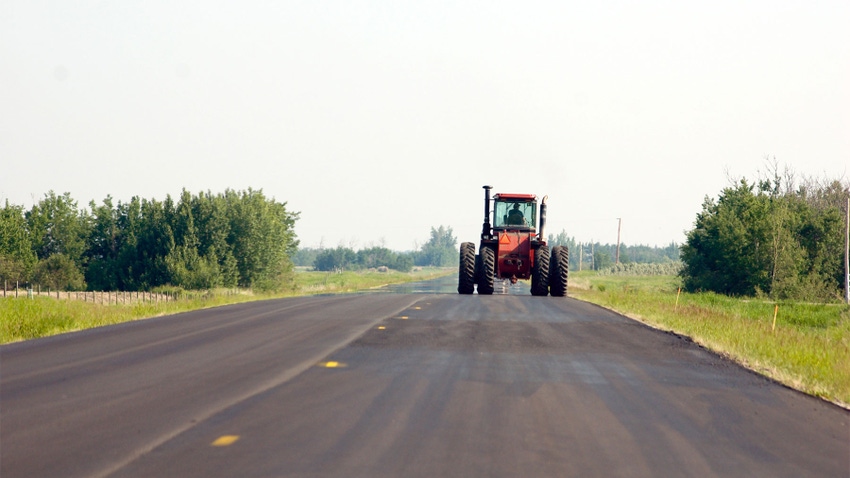October 10, 2023

The fall harvest season is upon us, meaning drivers can expect to see large farm implements traveling on the roads.
Farm implements need additional road space, so be prepared to slow down, pull to the side or stop.
Drivers in rural areas must remain alert to the possibility of encountering slow-moving farm machines and be prepared to slow or stop to avoid a rear-end collision or striking a farm machine that is turning into a field or driveway.
According to the Michigan Office of Highway Safety Planning, while only 19% of Americans live in rural areas, 45% of traffic crash fatalities occur on rural roads.
“Safety should always be a top priority when traveling on the roadway,” says Andrew Vermeesch, Michigan Farm Bureau legislative counsel. “Patience and awareness go a long way, and a little bit of extra attention and collaboration during this time can go a long way to ensure the safety of all motorists, both traveling by vehicle and farm equipment.”
Here are some tips for farmers and rural drivers:
Turns. Farm machinery can unexpectedly turn onto a public road from a field or driveway. It is important for everyone’s safety to have patience and share the road.
Out of lane. Machinery that is half on the road and half on the shoulder may suddenly move completely onto the road. Machinery may take up more than one lane to avoid obstacles such as road signs and mailboxes.
Slow movers. Farm machinery travels slower than normal traffic, often at speeds of 25 mph or less. Motorists must quickly identify farm equipment and slow down immediately to avoid rear-end crashes. A car going 55 mph will require 300 feet of braking distance — that's as long as a football field — to avoid rear-ending farm equipment traveling 15 mph. That means only about five seconds to close the gap.
Signs. Slow-moving farm machinery traveling at less than 25 mph is required to display a slow-moving vehicle emblem on the back of the equipment. This is a quickly identifiable sign to other motorists. All lighting should be working properly and be highly visible.
Patience. Farmers do their best to keep equipment off public roads and away from high-traffic areas, and most will pull over to allow drivers to safely pass. But sometimes it's not so easy. When road shoulders are soft or steep, pulling over can pose the risk of tipping.
Here are some tips for passing farm machinery:
Watch for lefts. Check to be sure that machinery is not turning left. Look for left-turn lights or hand signals. If the machinery slows and pulls toward the right side of the road, the operator is likely preparing to make a wide left turn. Likewise, sometimes to make a right turn with wide equipment, the driver must fade to the left.
Size up the road. Determine if the road is wide enough for you and the machinery to safely share.
Watch for obstacles. Look for roadside obstacles such as mailboxes, bridges or road signs that may cause the machinery to move to the center of the road.
Pass safely. Be sure there is adequate distance for you to safely pass.
Source: MFB
Read more about:
Farm SafetyYou May Also Like




